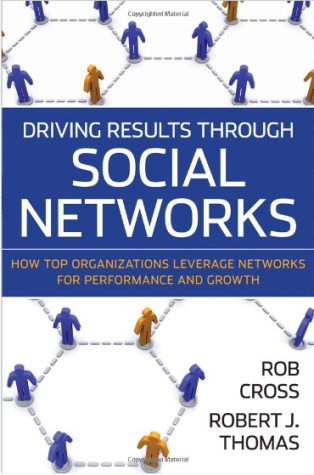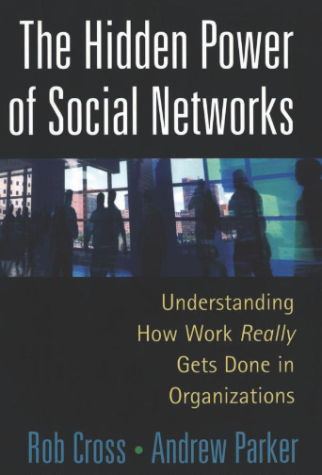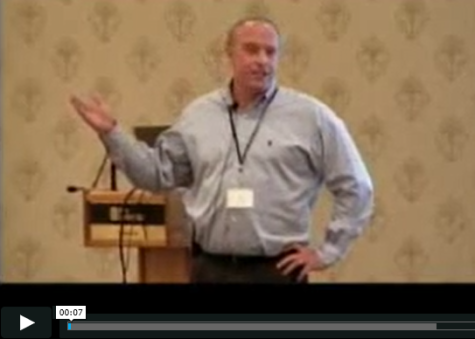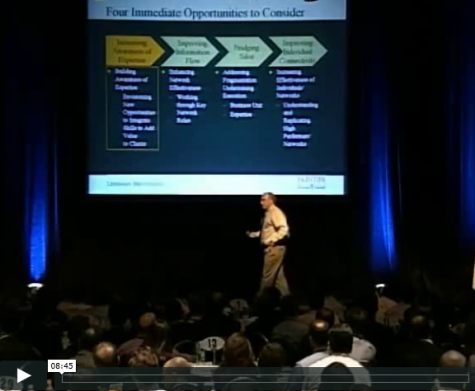
speaking topics
Aligning Collaborative Practices with Business StrategyDriving Employee Engagement and Retention Through Network Practices
Leadership Success – Driving Performance and Well-Being Through Networks
Network Based Organizational Forms
Organizational Agility and Innovation
Personal Effectiveness
Social Capital, Trust & Culture
Social Networking
Read more about Rob on his website
Connect with Rob on LinkedIn
announcing
Collaborative Overload makes Harvard Business Review 10 Must Reads for 2017.
What happens when employees are inundated with emails and meetings? In his recent cover story article for Harvard Business Review, Rob explores the negative effects of “Collaborative Overload” and suggests ways for business leaders to manage its impact.
Rob’s work on collaborative overload was featured in a June 2016 Wall Street Journal article entitled “So Busy at Work, No Time to Do the Job.”
Rob’s research on collaboration in the workplace was featured in recent editions of The Economist and Inc.
How do you “thwart the jerk at work?” A recent New York Times article draws on Rob’s research to examine ways to limit the effects of “de-energizers” on workplace morale and performance.
praise for Rob Cross
“Rob is a very well regarded expert on social network analysis and collaboration. He recently spoke at The Conference Board’s Annual Talent Management Strategies Conference, which attracts approximately 200 top HR executives. His presentation was very well received, with executives in attendance commenting on his gregarious, approachable style; the depth of his presentation; and the real value that it presented in terms of applicability to their challenges.”
-Jean McNulty and Russell Morris – Program Directors, The Conference Board
“Rob’s contribution motivated one long-term event attendee to report: “Kill me now, it doesn’t get any better than this!” Rob is a recognized expert in the discipline and provides practical, actionable information on how all can leverage the power of social networks to improve their daily operations.”
-Martha McGrath, Director of Programs, FCW Events
“Rob Cross is one of those rare speakers who ties academic research to business examples in a crystal clear way… He makes his material actionable – he tells you what to do with it or what the implications of the data are. He speaks with energy and passion, drawing the audience in with his easy-going style that invites questions and discussion. Rob keeps the audience engaged, learning, and wanting to hear more.”
-Bill Koff, Chief Technology Officer, and Director Leading Edge Forum, CSC
Rob Cross is the Edward A. Madden Professor of Global Business at Babson College. For almost twenty years, his research, teaching and consulting have focused on applying social network analysis ideas to critical business issues for actionable insights and bottom-line results. He has worked with over 300 leading organizations (companies, government agencies, and non-profit organizations) across industries on a variety of solutions including innovation, revenue growth, leadership effectiveness and talent management.
Ideas emerging from his research have resulted in three books, the most recent one titled, “Driving Results through Social Networks.” Rob has written over 50 articles, many of which have won awards. In addition to top scholarly outlets, his work has been repeatedly published in Harvard Business Review, Sloan Management Review, California Management Review, Academy of Management Executive and Organizational Dynamics. His work has also been featured in venues such as Business Week, Fortune, The Financial Times, Time Magazine, The Wall Street Journal, CIO, Inc. and Fast Company.
His most recent book, The Hidden Power of Social Networks: Understanding How Work Really Gets Done in Organizations (Harvard Business School Press), has been featured in venues such as Business Week, Fortune, The Financial Times, Time Magazine, The Wall Street Journal, CIO, Inc. and Fast Company.
Rob holds a BS and MBA from the University of Virginia and a DBA from Boston University.
Leading in a Connected World
In today’s flatter organizations work of significance demands effective collaboration within and across organizational, functional, physical and hierarchical boundaries. In this context a network perspective yields multiple performance improvement opportunities that traditional managerial tools such as process mapping, culture surveys and activity analyses all miss. This overview presentation demonstrates why and how executives must pay attention to collaboration and networks within their organizations based on in-depth experience with over 120 organizations in the last ten years. Specifically, this presentation:
- Demonstrates the way a network lens provides unique insights for leaders to improve value-added collaboration and concurrently performance (organizational and individual), innovation and quality of work life.
- Dynamically and in interaction with the audience reviews two (or more) case examples of strategic problems leaders were able to solve with a network perspective and then reviews custom examples selected to help the audience translate application of the ideas to their own immediate projects and concerns.
- Drives to individual networks and ways that leaders can improve their own effectiveness as well as realize substantial performance benefits from replicating networks of high performers throughout their employee base. OPTIONAL: This portion of the keynote can be further enhanced by participants completing the on-line network diagnostic ahead of time and reviewing their own results.
Innovation and Organic Growth through Networks
Innovation (product, process and business model) remains central to an organization’s ability to adapt to changing markets and technologies. However, increased complexity of most new products and services, reduced development cycles, and leaner budgets have meant that innovation efforts must bring together a depth and breadth of expertise—from both inside and outside the firm—faster and more effectively than ever before. A network perspective uniquely enables leaders to promote collaborations that generate better innovations with greater likelihood of effective implementation. Specifically, this presentation:
- Demonstrates how innovations of substance occur in collaboration (de-bunking the “lone, genius inventor” myth) and ways that current talent management approaches undermine innovation by not facilitating the right collaborations.
- Reviews three obstacles to innovation that arise when leaders do not take a network perspective:
- fragmentation of networks at points that invisibly undermine efforts to innovate along desired trajectories
- domination of networks by particular perspectives and expertise (and marginalization of others), unwittingly creating an innovator’s dilemma trap
- insularity keeping an organization from effectively leveraging external expertise
- Advocates five proven practices to drive innovation through networks:
- Create a network-centric ability to sense and respond to new opportunities
- Develop an ability to rapidly test/refine an opportunity rather than get caught in grid-lock
- Magnify returns on human capital by working through those in specific network positions
- Leverage “energy” in a network as a key determinant of innovation and progress
- Ensure organizational context helps innovation occur fluidly throughout a network
Generating Revenue with Effective Key Account and Sales Force Networks
In today’s dynamic, global and knowledge-intensive business environment, the quality of an organization’s relationships with its key clients is a substantial determinant of long-term profitability. Well-developed client relationships — characterized by a high degree of trust and mutual knowledge — lead to account penetration, lower transaction costs, customization of service delivery, and in turn a superior ability to create and extract value as well as greater relationship stability when client and firm executives change roles. In addition, well-integrated networks ranging from client contact points back into an organization allow for enhanced cross-selling and application of relevant expertise at the point of need. Specifically, this presentation will:
- Demonstrate how a network perspective applied at the client interface drives revenue by helping:
- Improve the range and depth with which account teams are interacting with key clients
- Optimize collaborations within account teams
- Improve ties from the account team back into the organization to ensure the best expertise is brought to bear on client issues
- Align key aspects of organizational context to improve value-added collaborations
- Review ways that organizations have generated substantial revenue in individually-oriented sales processes by profiling and then replicating networks of high performing sales people throughout the sales force. Behaviorally there is often little that differentiates high and low performing sales people, but helping to replicate the networks of high performers amongst new people and average contributors can have as much as a 200% impact on revenue.
- Drive revenue by:
- Improving revenue generating interactions at key points in a network of “rainmakers” (e.g., partners, account executives, etc.) and/or
- Optimizing sales and marketing programs by using network approaches to target key external opinion leaders that dramatically influence purchase decisions
Speeding Large-Scale Change (Restructurings, Culture Change Programs and M&A)
Executives must implement large-scale organizational change initiatives in ever-tighter time frames with fewer resources. Yet anticipated performance outcomes often do not materialize as internal resistance slows or derails change efforts. In this presentation I’ll use a series of cases to show how thoughtfully working through an organization’s informal structure can help executives:
- Facilitate large scale change by working through those in influential network positions (Central Connectors, Brokers and Peripheral Members). Though often “invisible” on the formal structure highly influential people in a network can speed change processes, improve the effectiveness of the re-structured environment and avoid susceptibilities should central connectors and/or brokers leave in a transition.
- Design and model interventions with a targeted network effect and track the impact of a transformation over time. Modeling the anticipated financial return of restructurings allows leaders to invest wisely in desired collaborations (rather than blindly implement technologies or other changes) as well as assess effectiveness of a change program over time.
- Drive cultural change by combining assessments of cultural values and networks to:
- drive change through people and values in certain network positions
- diagnose cultural drivers of network fragmentation
- identify dominant beliefs impeding cultural change
- intervene with a balanced emphasis on instrumental and expressive relations
- Employ career, mentoring and leadership processes that ensure individual connectivity is adapted for all employees to be successful in the new environment (i.e., an effective change program helps individual employees decrease time on ties good for past purposes and build out connectivity uniquely for each employee to be successful in the new environment).
Improve Performance through Network-Centric Talent Management Processes
Networks play a critical role in personal effectiveness, decision making, and innovation. Unfortunately, traditional advice for individual network building suggests that people indiscriminately build big networks rather than make more targeted investments in relationships – a mistake that my research actually shows has a negative impact on performance. This presentation reviews seven years of work focused on helping organization’s replicate the networks of high performers by identifying important network dimensions of high performers (i.e., the top 20% across a range of organizations). Specifically, this presentation shows leaders and/or directors of HR ways to apply network analysis to:
- Improve organizational performance by replicating structural, relational and behavioral network dimensions of high performers and help employees avoid six common network traps that rising stars frequently fall into, thereby invisibly de-railing their career trajectories. OPTIONAL: This portion of the presentation can be enhanced by participants completing the on-line network diagnostic and reviewing their own results.
- Effectively on-board new and experienced hires to help get them productive more rapidly as well as improve retention of new hires. My research shows that managers in organizations with well-connected newcomers avoid five common mis-perceptions and rapidly help newcomers establish a productive network of relationships.
- Avoid substantial knowledge loss when high performers or retirees leave by using network analysis to:
- Identify employees whose departure could substantially fragment a network
- Specify unique kinds of knowledge loss that occur when people in central, broker and peripheral network positions leave
Driving Financial Return through Value-Added Collaborations and Strategic Alignment
Strengthening networks isn’t about simply increasing interactions across an organization; it’s a product of increasing productive interactions and reducing unproductive ones. Such a targeted approach can turn networks into a strategic asset. By looking inside networks, to assess where value and cost reside, leaders can improve connectivity at points that add economic value. This presentation demonstrates how leaders can drive financial return and ensure strategic alignment through a network perspective:
- Driving Financial Return By:
- Defining and replicating network dimensions of high-performing individuals and teams
- Revealing collaborations central to productivity improvement and modeling anticipated returns from network investments
- Assessing collaborations that underlie revenue growth and replicating these interactions at value-added points in a network (e.g., cross-selling)
- Visualizing cost structures relationally to improve managerial decision making through a more accurate understanding of the magnitude and drivers of collaborative costs
- Ensuring Networks Support Strategy Execution By: Enabling organizations to recognize opportunities or challenges and coordinate appropriate responses depending on the nature of the work and concurrent network archetype:
- Customized Response. These networks exist in settings like professional services and R&D where both problems and solutions are ambiguous and value is delivered via networks that both frame and innovatively solve a problem
- Modular Response. These networks thrive in settings like software development or sales where components of a problem are known but the combination or sequencing of these components is unknown in advance. Here value derives from delivering a unique response depending on the constellation of expertise required by presenting problems such as a surgical procedure or lawsuit
- Routine Response. These networks exist in environments like call centers where the work is more easily standardized. Value is delivered through efficient and consistent response to a set of established problem domains and taking work out of the network
Knowledge Management and Organizational Learning
Early approaches to knowledge management focused too heavily on database solutions – efforts that created massive technical and organizational infrastructures but universally under-performed in terms of organizational impact. My work over the past ten years has clearly shown that people are much more reliant on the network around them for information than they are for available technologies in even the most sophisticated organizations. This presentation demonstrates how a network approach can dramatically improve knowledge and learning initiatives by:
- Improving knowledge transfer efforts across common “silos” of function/business-unit, physical distance, hierarchy and technical expertise by building appropriate network connectivity.
- Efficiently moving a Community of Practice from an ad hoc group to a value producing network by:
- Improving information flow and knowledge-reuse
- Developing an ability to sense and respond to key problems or opportunities
- Driving planned and emergent innovation
- Nurturing value creating interactions
- Engaging employees through community efforts
- Improve individual learning and decision-making by optimizing personal network connectivity as relevant for given roles through talent management and leadership development processes.
Industry/Function Specific Keynotes
Presentations are often customized to specific concerns of a given industry or functional domain. Drawing on work in over 120 organizations I am able to tailor presentations to specific audience agendas. Below are some common applications that I speak to:
- Professional Services: High impact network applications include:
- Client connectivity
- Cross-selling and revenue producing collaborations
- Replicating high performer networks across roles
- Assessing and improving effectiveness of diversity initiatives
- Consumer Products and Pharmaceuticals: High impact network applications include:
- Driving innovation in R&D as well as through new product development initiatives
- More seamlessly navigating large scale change programs
- Improving sales force effectiveness by replicating networks of high performers
- Petrochemical, Utilities and Defense: High impact network applications in these and other fixed asset (and cost structure) industries include:
- Driving financial return by minimizing decision-cycles and costs structures in networks
- Improving knowledge transfer efforts
- Improving performance through individual networks in talent programs.
- Government: High impact applications in government focus on:
- Creating more adaptive organizations able to leverage expertise throughout an agency
- Building communities of practice and driving knowledge transfer
- Improving performance and quality of work life through talent programs targeting individual networks
- Minimizing knowledge loss in the face of looming retirements
- Human Resources: High impact applications in HR focus on:
- Talent management applications that help to replicate networks of high performers
- Leadership programs that improve executive performance through a network lens
- Driving more effective transitions through organization and individual networks
- CIO and Information Technology Groups: High impact applications in IT domains include:
- Assessing and improving financial return and decision-cycles through collaborative investments
- Driving more effective technology uptake by working through networks
- Value-added support services for internal clients by helping understand and improve a network (as opposed to blindly implementing a collaborative tool)




